Retention marketing is the most powerful way to drive ROI.
When you market to your existing customers, you have the highest chance of success because they already know and trust your brand.
However, to effectively market to these customers, you need to have the right data on hand.
This is where a first-party database comes in.
A first-party database consists of information collected directly from your customers—things like names, email addresses, phone numbers, and demographics.
However, many brands struggle to build and maintain this valuable resource. Without the right data, they miss out on the opportunity to market directly to their audience, limiting their ability to retain customers and increase sales.
Why is 1st-Party Data Crucial?
First-party data is data that brands collect directly from your customers and audiences through interactions with them through site visits or app downloads. A strong first-party database allows brands to create those personalized experiences, building loyalty and repeat business.
Read more on – Importance of 1st Party Data and Organic Ways to Build it
Building a first-party database takes time and patience. It’s not something that can be done quickly. The main information to collect is customer identity—things like phone numbers or emails. But it’s also important to gather other details, like demographics and preferences, but only if the customer agrees to share them.
If customers don’t see what’s in it for them, they might drop off during the process. This is why it’s important to clearly show the value to the customer from the beginning.
Many brands focus only on capturing information from customers who make a purchase. But there’s a bigger opportunity in reaching those who browsed but didn’t buy. These customers are often 20 times more valuable than those who make a purchase right away.
In this blog, we’ll share effective methods that can help brands build a solid first-party database, based on our experience working with over 20 brands—both online and offline.
You can have data without information, but you cannot have information without data.
Daniel Keys Moran
Table of Contents
1. Digital Invoicing
While it’s still common for customers to walk out of stores with paper receipts, many brands are transitioning to digital billing systems. Instead of handing out physical receipts, brands now collect customer information like phone numbers and email IDs and send digital invoices directly to customers’ inboxes.
This not only reduces paper waste but also helps businesses gather first-party data that can be used for future communication. With this shift to digital, brands can build a stronger connection with their customers through ongoing, personalized communication.
Example: Pantaloons
While traditional paper receipts remain common in many retail environments, Pantaloons has embraced a digital approach to invoicing that reflects a modern and efficient business model.
When a customer shops at Pantaloon, they receive an electronic invoice via email that not only confirms the transaction but also provides links to loyalty programs and upcoming sales events.
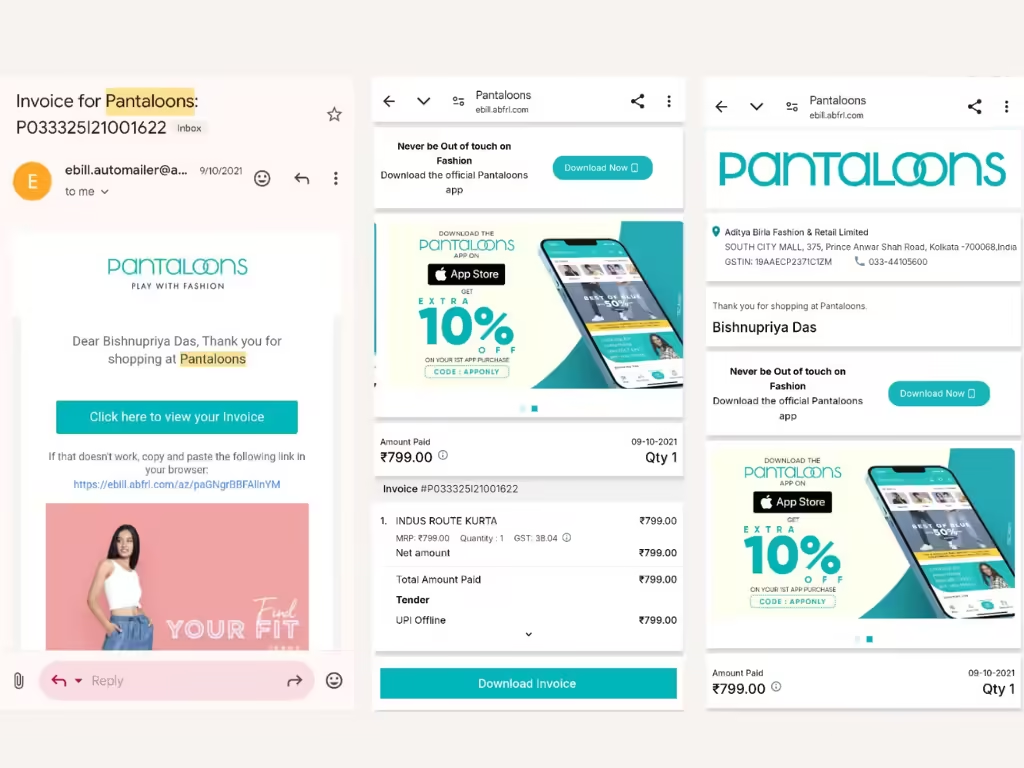
The digital invoice becomes an ongoing communication tool, serving as a touchpoint where brands can introduce surveys or invite customers to join loyalty programs that reward repeat purchases.
By analyzing the data from these interactions, Pantaloon can refine their marketing strategies and boost customer retention rates.
2. QR Codes
QR codes are a great way for brands to collect important customer data, especially in places where regular methods don’t work well.
The QR code in-store can serve multiple purposes by linking to various calls-to-action (CTAs) such as entering a contest, filling out a sign-up form, receiving a discount, or downloading the app. This allows customers to engage with the brand in different ways, making the QR code a versatile tool for driving interaction and offering incentives while enhancing the shopping experience.
Brands can put QR codes on packaging, displays, menus, or other materials to create a digital connection with customers. When customers scan these codes with their phones, they’re taken to a page where they can share their name, email, or preferences.
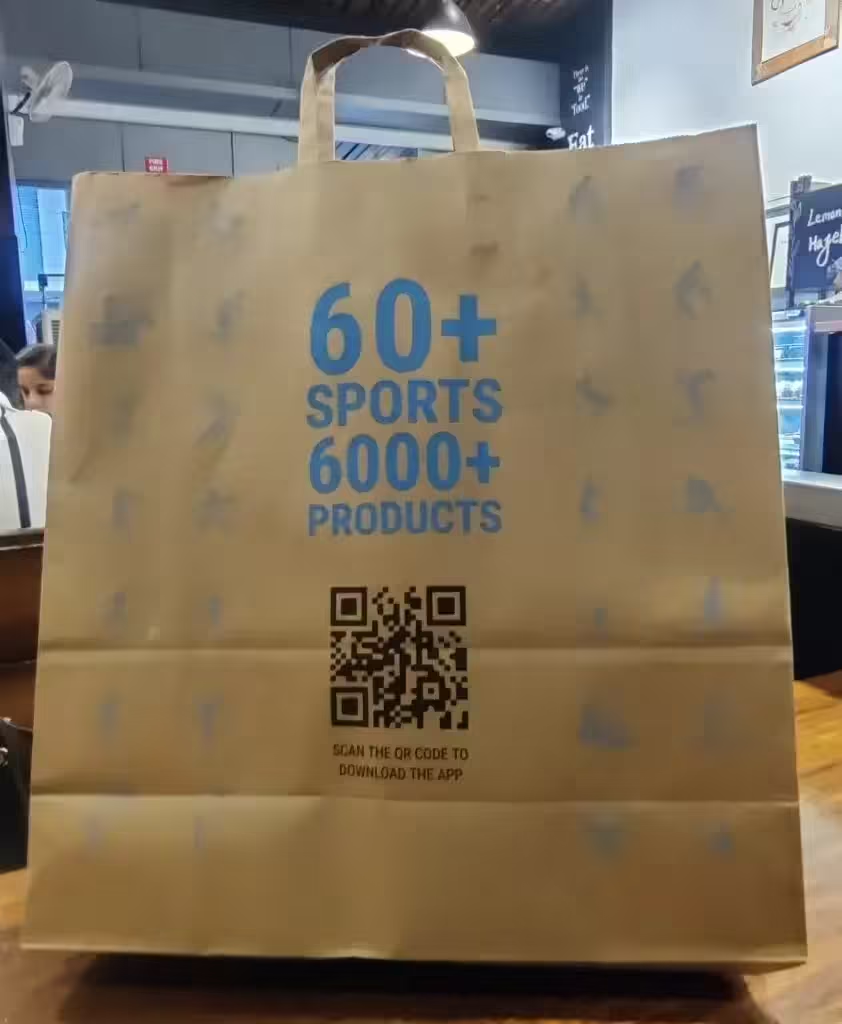
This process is quick and easy, making it more likely for people to participate. Some brands even offer rewards, like discounts or samples, to encourage customers to scan and share their info.
Dynamic QR codes also let brands track details like when and where scans happen, helping them understand customers better and improve marketing.
Example: ChaiPoint's Feedback QR Campaign
ChaiPoint, a popular tea chain in India, implemented a QR code initiative across its stores in Delhi to enhance customer engagement and gather valuable feedback.
The campaign involved placing QR codes on their tea dispensing machines, prompting customers to scan the code to provide feedback about their experience.
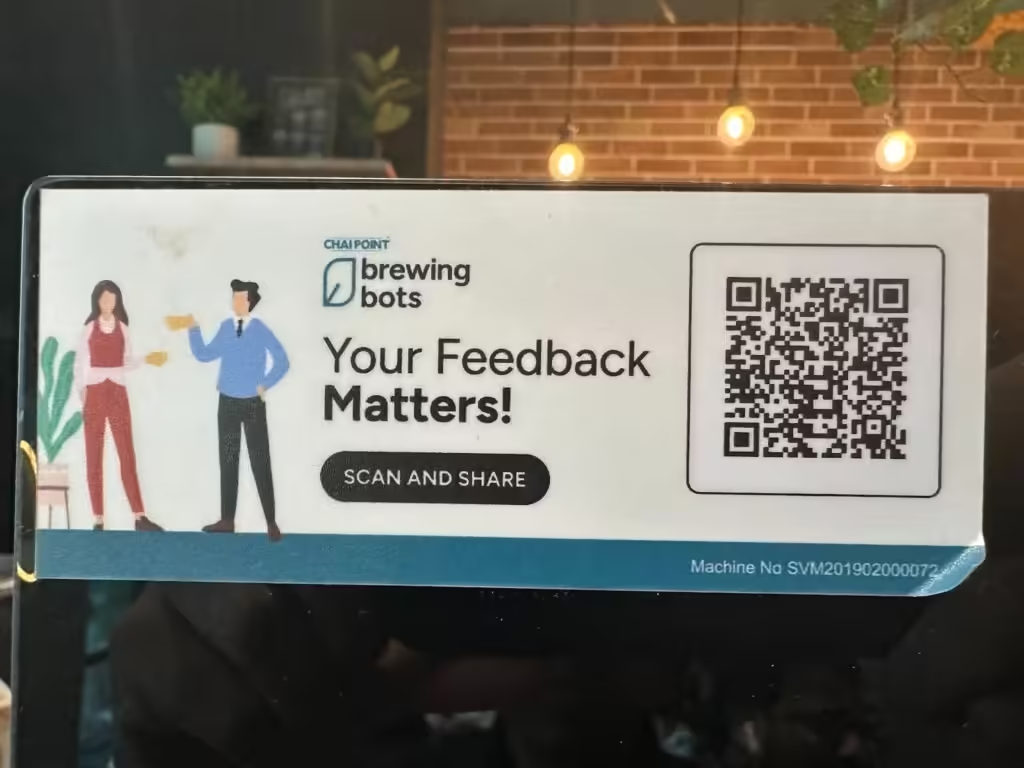
Key Features of the Campaign
- Customer Engagement: ChaiPoint placed QR codes right on their tea machines. This made it easy for customers to give quick feedback after enjoying their tea, leading to honest and helpful responses.
- Data Collection: When customers scanned the QR code, they were asked to enter their names and email addresses to access the feedback form. This helped ChaiPoint gather important information and learn about what customers like.
- Improving Service Quality: The feedback helped ChaiPoint understand what customers enjoyed and where they could improve, making their service and tea even better.
- Incentives for Participation: To make feedback more fun, ChaiPoint offered small rewards, like discounts or loyalty points, encouraging more customers to participate.
3. Loyalty Programs
Loyalty programs are a great way for brands to get important customer information while also making customers feel valued. When customers join these programs, they often share their names, email addresses, and sometimes what they like to buy. In return, they get rewards, discounts, or special offers.
By joining, customers feel appreciated, and brands get valuable information to offer more personalized shopping experiences. With this information, brands understand what customers want and can use it to create better offers, making shopping more enjoyable. A notable example of a brand effectively using a loyalty program to capture first-party data in India is Shoppers Stop with its First Citizen Program.
Example: Shoppers Stop First Citizen Program
Shoppers Stop, one of India’s leading retail chains, has successfully implemented the First Citizen loyalty program, which serves as a powerful tool for capturing valuable first-party data while enhancing customer loyalty and engagement.

Key Features of the First Citizen Program
- Easy Sign-Up: Customers can join the First Citizen program either in-store or online. During sign-up, they provide basic details like their name, email, phone number, and what they like to shop for. This information helps Shoppers Stop understand their customers better.
- Earn Points: Members get points every time they shop at Shoppers Stop stores or on the website. These points can be used as discounts on future purchases, giving customers a reason to come back and shop more.
- Special Offers: Shoppers Stop uses the information collected through the program to send offers based on each customer’s shopping preferences. For example, if a member buys beauty products often, they might get special discounts on beauty items or early access to new products.
- Exclusive Perks: Members get special perks like early access to sales, sneak peeks of new collections, and customized shopping experiences. This makes members feel valued and connected to the brand.
- Feedback: Shoppers Stop values member feedback to understand their shopping experience and needs. This feedback helps improve their product range and customer service.
4. Click-to-WhatsApp Ads
Social media platforms like Facebook and Instagram are effective tools for reaching a wide audience and engaging with potential customers.
One powerful feature that brands are increasingly using is Click-to-WhatsApp ads. These ads are designed to take users directly from the social media platform to a chat on WhatsApp with the brand.
This direct connection is highly valuable for several reasons. First, it allows businesses to immediately address customer questions and offer real-time support.
Customers appreciate the instant access to information, making it easier for them to make a purchasing decision.
Secondly, during the conversation, brands can gather essential contact details, such as phone numbers and email addresses, which are crucial for follow-ups and future communication.
Example: JioMart
JioMart, a popular grocery delivery service, has effectively leveraged the Click to WhatsApp feature to improve customer interaction and simplify the shopping process.
When customers browse through their website or social media pages, they can easily click on the WhatsApp button to start a chat.
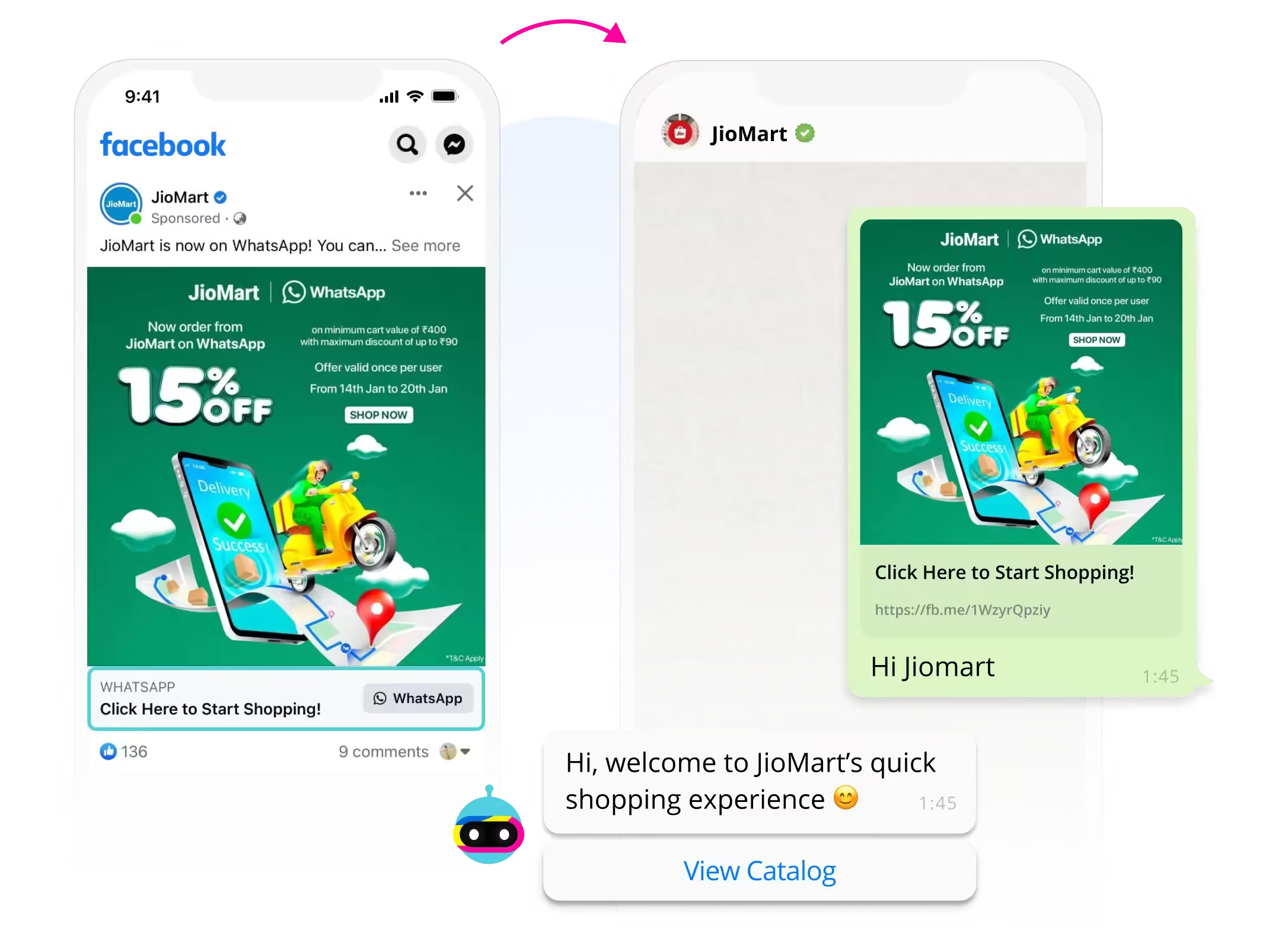
This transition from browsing to instant communication helps customers get the support they need in real-time, whether they have questions or need assistance before making a purchase. It creates a smoother, more convenient shopping experience with minimal effort required from the customer.
Direct engagement with potential customers via WhatsApp creates a personal connection, making them more likely to trust the brand and share their contact details.
We’ve put together a simple, easy-to-follow guide, based on our research and work with many brands, to help you understand this better – The Ultimate Guide To The MarTech Tools For WhatsApp For Your Business
5. Pop-Ups
Pop-ups and spin the wheel options can help engage anonymous users on the website. Many D2C websites use pop-ups to offer sign-up bonuses or encourage new users to share their email for a discount or deal. The idea is to capture information from users who are browsing with intent but looking for a deal.
Example: Bunaai
Bunaai, a clothing brand, employs a pop-up that appears after a visitor spends a few minutes on the site. This pop-up invites users to join an “exclusive VIP club,” offering early access to new products and special promotions.
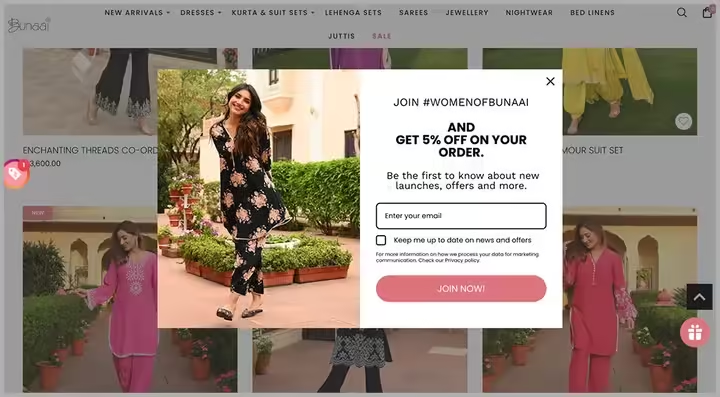
This approach not only captures email addresses but also builds a sense of community among customers, enhancing engagement without being overly salesy.
Data are just summaries of thousands of stories – tell a few of those stories to help make the data meaningful.
Chip and Dan Heath
6. Conclusion
Building a company database isn’t an overnight task, but combining these five methods makes it much easier.
It is not just about collecting data but to build strong relationships with the customers. The more personal and thoughtful brands are in gathering data, the stronger their database will become.
Over time, these practices will not only improve the Omnichannel marketing efforts but also help brands create a more engaged, loyal customer base.
If you’d like to discuss how we can help enhance and optimize your Omnichannel, Retention and growth marketing strategies, we’d be happy to set up a consultation call. Feel free to reach out to us at alibha@daiom.in
For more informative content and blog, follow and stay tuned to DAiOM.
Subscribe to our NEWSLETTER!


